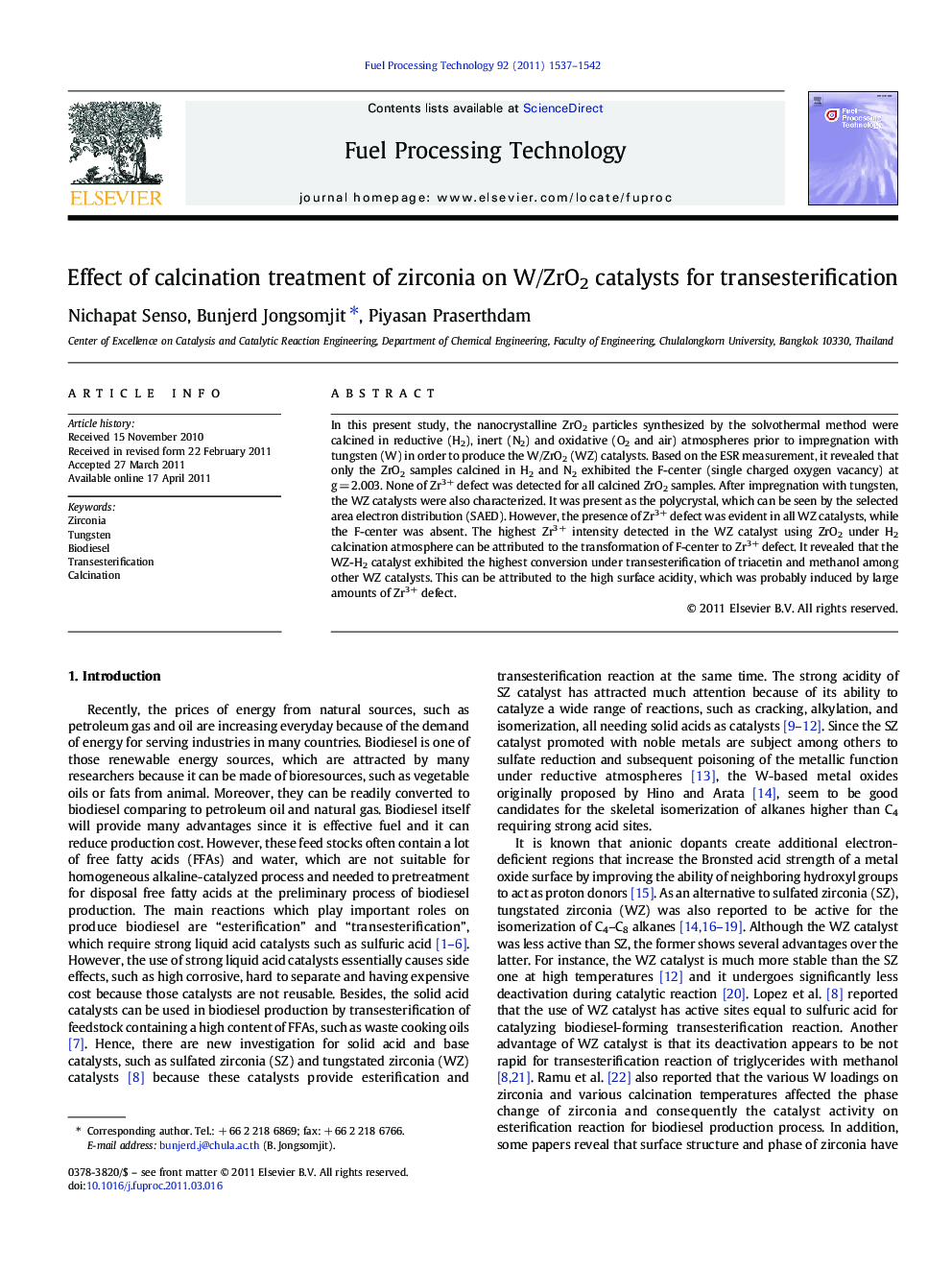| کد مقاله | کد نشریه | سال انتشار | مقاله انگلیسی | نسخه تمام متن |
|---|---|---|---|---|
| 210792 | 461727 | 2011 | 6 صفحه PDF | دانلود رایگان |

In this present study, the nanocrystalline ZrO2 particles synthesized by the solvothermal method were calcined in reductive (H2), inert (N2) and oxidative (O2 and air) atmospheres prior to impregnation with tungsten (W) in order to produce the W/ZrO2 (WZ) catalysts. Based on the ESR measurement, it revealed that only the ZrO2 samples calcined in H2 and N2 exhibited the F-center (single charged oxygen vacancy) at g = 2.003. None of Zr3+ defect was detected for all calcined ZrO2 samples. After impregnation with tungsten, the WZ catalysts were also characterized. It was present as the polycrystal, which can be seen by the selected area electron distribution (SAED). However, the presence of Zr3+ defect was evident in all WZ catalysts, while the F-center was absent. The highest Zr3+ intensity detected in the WZ catalyst using ZrO2 under H2 calcination atmosphere can be attributed to the transformation of F-center to Zr3+ defect. It revealed that the WZ-H2 catalyst exhibited the highest conversion under transesterification of triacetin and methanol among other WZ catalysts. This can be attributed to the high surface acidity, which was probably induced by large amounts of Zr3+ defect.
Research highlights
► Reductive and inert atmospheres result in the formation of F-center for ZrO2.
► F-center can transform to Zr3+ with W loading.
► The presence of Zr3+ with W loading rendered high acidity of WZ catalysts.
Journal: Fuel Processing Technology - Volume 92, Issue 8, August 2011, Pages 1537–1542